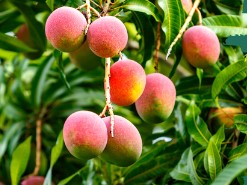Growing mangoes in linving soil
In this page, we will present you how to grow mangoes in living soil.
Information about the crop
- Tree with strong development: 10 to 30 m high, evergreen foliage, trunk up to 1 m in diameter.
- Variable coloring: Green, yellow, orange, purplish red, alone or mixed in the form of spots.
- Flowering: from December to April (depending on the country).
- Fruiting: from March to July.
- Harvest: from May to July.
Soil preparation
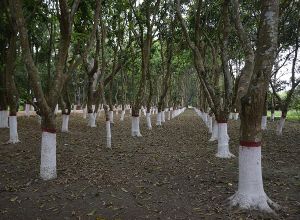
- Establish plant cover.
- Dig a hole of 50 cm x 50 cm x 50 cm.
- Mix the soil with 20 kg of well-rotted manure, incorporating 500 g of superphosphate or tricalcium phosphate, 200 g of potassium sulphate and if necessary dolomite.
- Planting density: from 100 to 400 trees / ha.
Planting
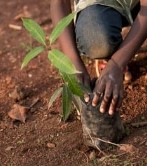
- At the beginning of the rainy season.
- The mango tree with its clod is stripped of its pot and planted at the top of a mound.
- A raised basin will be made with soil taken from the interline.
- A first watering will moderately compact the soil and ensure good contact between the soil and the clod.
- A mulch, after the first irrigation, will help maintain humidity favorable to the growth of young roots.
Fertilization
Manure in kilogram per hectare :

Irrigation
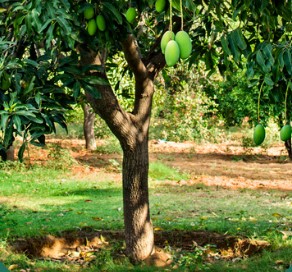
- Fairly high water needs.
- The pivoting root system is very powerful and allows it to find water in the deep layers. If the water resource is sufficient, irrigation is not necessary.
- Otherwise, it can be practiced in different forms: drip, microjets, mini-sprinklers, in the basin or in the line. These last two forms of irrigation waste a lot of water.
Protection
- Fungi: Early blight, anthracnose, scab, rubella, sooty mold, mango tree malformation, stem rot, powdery mildew.
- Bacteria: Mango bacteriosis.
- Insects: Mango mite, red mango spider, spiral whitefly, West Indian fruit fly, diaspine mealybugs, nematodes,...
- Physiological or abiotic diseases: Chilling injury, sunburn, damage due to sap burn, phytotoxicity, internal over-ripeness of the mango.
- Stop watering during wet periods.
- Carry out pruning at the end of the morning in sunny weather.
Plant cover
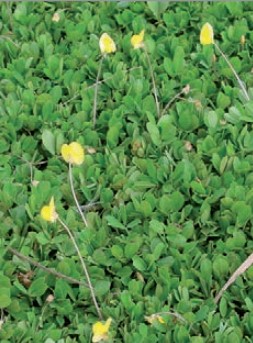
- In order to protect the soil from UV rays and erosion and limit the use of herbicides, a perennial plant cover (preferably) should be planted upstream of the plantation.
- This cover will be controlled by mowing if it does not self-regulate naturally.
- Possible covers are: Stylosanthes guianensis, Arachis pintoï and Arachis repens.
Pruning
- Removal of excess branches to ventilate the foliage and avoid confined environments.
- Limitation of the height of mango trees by pruning so that phytosanitary treatments can cover the entire canopy.
Harvest
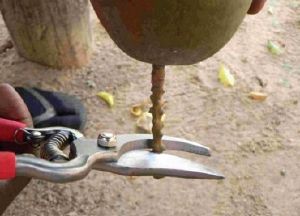
- April to July.
- Cut the peduncle at 10-15 cm and place the mango upside down to prevent the latex from damaging the epidermis.
- After coagulation of the latex, the mangoes are boxed for packaging.
- Disinfect cutting tools regularly to prevent disease.
Storage
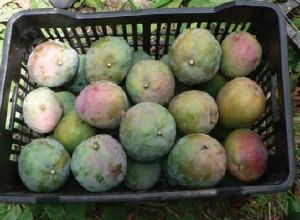
- Above 8°C, ideally between 10 -14°C and at a hygrometry of 85 to 95%.
- Avoid the cold room, it dulls the taste and precipitates the maturation once the mangoes come out.
- Conservation up to 15 days under these conditions.
For more information on the mango's technical itinerary
- https://agritrop.cirad.fr/573091/1/document_573091.pdf
- http://ephytia.inra.fr/fr/C/26522/Tropifruits-Liste-des-maladies-et-ravageurs-du-manguier
- https://www.youtube.com/watch?v=1rmFThLFzUI
- https://agritrop.cirad.fr/524843/1/document_524843.pdf
- https://www.service-public.pf/dag/wp-content/uploads/sites/28/2018/12/manguier-nt-culture-marquises_ciradYvesBertin_nd.pdf
Sources
- https://agritrop.cirad.fr/573091/1/document_573091.pdf
- http://ephytia.inra.fr/fr/C/26522/Tropifruits-Liste-des-maladies-et-ravageurs-du-manguier
This page has been written in partnership with the Urbane project and with the financial support of the European Union.
